Recent Posts
Understanding How Mold Can Weaken Your Home's Structural Integrity
7/17/2024 (Permalink)
 Mold can have a significant impact on your home's structural integrity.
Mold can have a significant impact on your home's structural integrity.
Mold growth isn't just unpleasant; it can also pose serious risks to the structural integrity of your home. Mold thrives in damp environments, and when left unchecked, it can spread rapidly throughout your property, compromising various structural components.
Weakened Building Materials
One of the biggest impacts of mold on your home is its ability to weaken building materials. Mold feeds on organic materials such as wood, drywall, and insulation, breaking them down over time. As mold colonies grow and spread, they can cause these materials to deteriorate, leading to structural damage. For example, mold can cause wooden beams and joists to rot, weakening the overall framework of your home. Similarly, it can degrade drywall, causing it to lose its structural integrity and crumble.
Compromising Structural Components
Mold growth can also compromise essential structural components of your home, such as beams, joists, and foundations. When mold infests these elements, it can weaken them, making them less capable of supporting the weight of your home. This weakening can lead to sagging floors, bowed walls, and even structural failure in severe cases.
Immediate Remediation is Key
Addressing mold issues quickly is crucial to preserving the structural integrity of your home. If you suspect mold growth, it's important to take immediate action to identify and remediate the problem. Hiring a professional mold remediation service, like SERVPRO®, can help ensure that the mold is properly removed and that steps are taken to prevent its return. By addressing mold issues early on, you can protect your home from structural damage and maintain its long-term stability.
Preventing Future Mold Growth
Prevention is key when it comes to protecting your home from mold and preserving its structural integrity. Take steps to control moisture levels in your home by addressing leaks, improving ventilation, and using dehumidifiers in damp areas. Regularly inspecting your home for signs of mold and addressing any issues promptly can help prevent mold growth before it becomes a significant problem.
Mold can have a significant impact on your home's structural integrity, compromising building materials and essential components. Immediate remediation and proactive prevention are essential to protect your home from mold-related damage. By addressing mold issues early on and taking steps to prevent future growth, you can protect the structural integrity of your home for years to come!
Enhancing Your Home's Resilience Against Water Damage
6/12/2024 (Permalink)
 In this blog, we will discuss practical tips and strategies to safeguard your property from water-related issues.
In this blog, we will discuss practical tips and strategies to safeguard your property from water-related issues.
Water damage is a common and potentially costly issue that homeowners face. However, by taking proactive steps to enhance your home's resilience against water damage, you can minimize the risk and mitigate potential damage. In this blog, we will discuss practical tips and strategies to safeguard your property from water-related issues, whether from flooding, plumbing leaks, or environmental factors.
Regular Inspection and Maintenance
Perform periodic inspections of your home's plumbing system, including pipes, faucets, and appliances, to identify any signs of leaks or deterioration. Promptly address any leaks, no matter how small, as they can lead to severe water damage if left unattended. Regular maintenance of your home's structural elements, such as the roof and foundation, can also help prevent water intrusion.
Install and Maintain Proper Drainage Systems
Ensure your home is equipped with a well-designed and adequately maintained drainage system. Clean gutters and downspouts regularly to prevent clogs that can result in water overflow or backflow. Optimize the slope of your property to direct water away from the foundation, preventing pooling and potential structural damage.
Grade Landscaping and Foundation Protection
Properly grade your yard to ensure that water flows away from the foundation. This helps prevent groundwater seepage into basements and crawlspaces, reducing the risk of water damage. Additionally, consider installing foundation waterproofing systems, such as exterior coatings or interior drainage systems, to provide an extra layer of protection against water infiltration.
Install Sump Pumps
Sump pumps are essential tools in preventing basement or crawlspace flooding. Install a reliable sump pump and ensure it is properly maintained and regularly tested. Consider a battery backup system to ensure functionality during power outages. Properly directing the discharged water away from the foundation is also crucial to prevent water from re-entering your home.
Seal Vulnerable Areas
Identify and seal any potential points of water entry in your home. This includes gaps around windows and doors, cracks in the foundation, and damaged or missing roof shingles. Adequate sealing of these vulnerable areas helps maintain a watertight envelope and reduces the risk of water intrusion.
Use Water-Resistant Materials
When making renovations or repairs, opt for water-resistant materials whenever possible. Consider moisture-resistant drywall, water-repellent sealants, and waterproof membranes for areas prone to high humidity or water exposure, such as bathrooms, basements, and laundry rooms. These materials can help prevent water damage and inhibit the growth of mold and mildew.
Install Water Detection and Alarm Systems
Invest in water detection and alarm systems that can alert you to potential leaks or water intrusion. These systems utilize sensors and alarms to notify homeowners of any water-related issues, allowing for immediate action and mitigation, and preventing extensive damage.
Educate Household Members on Water-Saving Habits
Encourage water-saving habits among household members to reduce the risk of plumbing failures and minimize water damage. This includes promptly repairing dripping faucets, avoiding excessive water usage, and properly maintaining and using appliances such as washing machines and dishwashers.
Consider Flood Insurance
Evaluate your need for flood insurance, regardless of whether you live in a flood-prone area. Flood damage can occur from various sources, including heavy rainfall or plumbing failures. Having the appropriate insurance coverage can provide financial protection in the event of water damage.
By implementing these proactive measures to enhance your home's resilience against water damage, you can significantly reduce the risk of costly repairs, property damage, and the associated stress and inconvenience. By regularly inspecting and maintaining your home, improving drainage systems, sealing vulnerable areas, using water-resistant materials, and investing in early detection systems, you can better protect your property from the detrimental effects of water damage. As always, SERVPRO® is here to provide professional assistance if water damage does occur, ensuring a swift and thorough restoration process.
The Importance of Prompt Roof Repairs After Michigan Storms
5/15/2024 (Permalink)
 In this blog, we will highlight the importance of prompt roof repairs after Michigan storms and how it plays a crucial role in your storm damage plan.
In this blog, we will highlight the importance of prompt roof repairs after Michigan storms and how it plays a crucial role in your storm damage plan.
Michigan is known for its unpredictable and sometimes severe weather conditions, including storms that bring heavy rain, strong winds, and even hail. These storms can cause significant damage to roofs, leaving homeowners in need of immediate roof repairs. In this blog, we will highlight the importance of prompt roof repairs after Michigan storms and how it plays a crucial role in your storm damage plan.
Prevent Further Damage
After a storm in Michigan, it is essential to assess your roof for any signs of damage, such as missing or damaged shingles, leaks, or sagging areas. Failure to address these issues promptly can lead to further damage during subsequent storms.
Even minor roof damage can worsen over time if not repaired promptly. Water can seep through cracks and gaps, causing interior water damage, electrical hazards, and mold growth. By addressing roof damage immediately, you can prevent costly repairs down the road and maintain the integrity of your home.
Protect Your Home and Belongings
A damaged roof can compromise the structural integrity of your home. It can allow water to infiltrate your attic, walls, and ceilings, causing extensive damage to insulation, drywall, and furnishings. Additionally, a compromised roof can create an entry point for pests and animals.
By promptly repairing your roof after a storm, you protect your home and belongings from water damage, mold growth, and other potential hazards.
Ensure Safety for Your Family
A damaged roof can pose safety risks to your family and yourself. Loose or missing shingles can become projectiles during high winds, posing a threat to people and property. Additionally, a weakened roof structure may be more prone to collapse, especially during subsequent storms.
By promptly repairing your roof, you ensure the safety and well-being of your family, providing them with a secure and stable living environment.
Faster Insurance Claims Process
Addressing roof damage immediately after a storm can also expedite the insurance claims process. Insurance companies typically require timely reporting of damage and prompt repairs to minimize further issues and costs.
By getting your roof repaired promptly and documenting the process with photographs and accurate records, you can streamline your insurance claim and receive the necessary compensation more efficiently.
Storm Damage Help from SERVPRO®
After a Michigan storm, it is crucial to seek professional help for roof repairs. SERVPRO is here to assist you with storm damage help, including timely roof repairs and restoration services.
Our expert teams have the knowledge, experience, and state-of-the-art equipment to assess and repair storm-damaged roofs promptly. We understand the urgency of the situation and work efficiently to restore your roof, ensuring the safety and comfort of your home.
Prompt roof repairs are imperative after Michigan storms to prevent further damage, protect your home and belongings, ensure safety for your family, and expedite the insurance claims process. If your roof has suffered storm damage, do not hesitate to contact professionals like SERVPRO for storm damage help. Trust our expertise in storm damage cleanup and restoration to get your roof and home back to normal as quickly as possible.
Understanding the Different Stages of Fire Damage Restoration
4/17/2024 (Permalink)
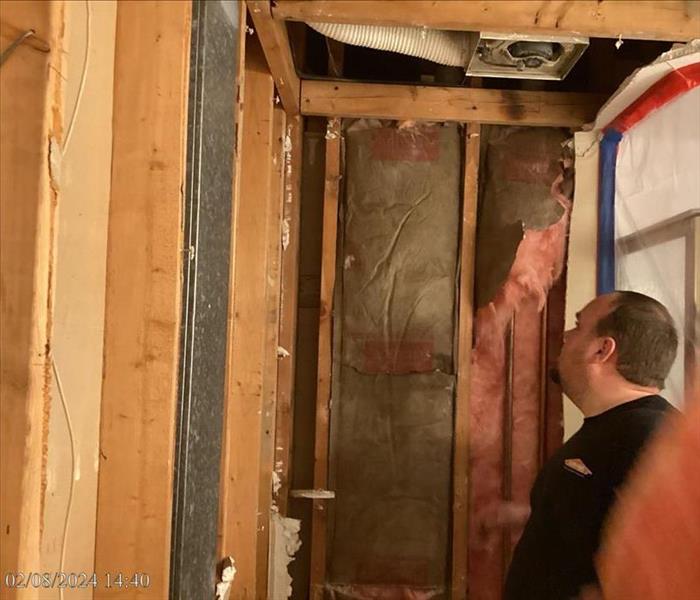 In this blog, we will explore the different stages of fire damage restoration and the methods used by restoration experts.
In this blog, we will explore the different stages of fire damage restoration and the methods used by restoration experts.
A fire in your home or business can be a devastating experience, leaving behind smoke, soot, and fire damage. Restoring your property to its pre-fire condition requires a comprehensive fire damage restoration process that involves several stages. In this blog, we will explore the different stages of fire damage restoration and the methods used by restoration experts like SERVPRO® to bring your property back to life.
Stage 1: Assessment and Inspection
The first stage of fire damage restoration is an assessment and inspection of the affected area. Trained professionals will evaluate the extent of fire and smoke damage and assess the safety of the property. The inspection process will help create a detailed action plan for the restoration process.
Stage 2: Board-Up and Tarping
If the fire has damaged windows, doors, or roofs, the next step is to board up or tarp the affected areas. This is done to protect the property from further damage from weather or intruders.
Stage 3: Water Removal and Drying
Firefighting efforts often involve large amounts of water being used to extinguish flames, leading to secondary water damage. In this stage, experts will remove any standing water and begin drying to restore the affected area to its pre-damage condition.
Stage 4: Smoke Damage Restoration
Smoke and soot particles can easily permeate surfaces, leaving behind a trail of damage. Restoration professionals use specialized equipment and cleaning methods to remove the smoke and soot particles. In this stage, experts will also employ odor elimination techniques to remove lingering smoke odors.
Stage 5: Cleaning and Sanitation
The next step in fire damage restoration is the cleaning and sanitization of the affected area and all personal belongings. This process uses specialized equipment and cleaning products to remove any remaining smoke and soot particles and to restore the property to its pre-fire condition.
Stage 6: Restoration and Repairs
After the cleaning and sanitation process is complete, the property requires repairs and reconstruction. Restoration professionals will replace any damaged components such as walls, floors, or ceilings, and ensure that the property is restored to its pre-damage condition.
Stage 7: Final Inspection
Once the restoration process is complete, final inspections are performed to ensure that the property is fully restored to its original condition. The inspection process provides assurance to the owners that their property is safe and free from any remaining damage.
Experiencing a fire in your home or business can be a traumatic experience, but with prompt action and the help of professionals, your property can be restored to its pre-damage condition. The fire damage restoration process is a multi-stage process that involves assessing the damage, conducting smoke damage restoration, cleaning and sanitizing, restoring and repairing the property, and a final inspection. Restoration professionals like SERVPRO® use advanced equipment and techniques to ensure that the restoration is thorough and effective. By understanding the different stages of fire damage restoration, you can take the necessary measures to restore your property to its pre-fire condition after experiencing fire damage.
Mold-Resistant Building Materials and Techniques
3/13/2024 (Permalink)
Preventing mold damage in your home begins with utilizing mold-resistant building materials and implementing effective construction techniques. Mold growth can cause structural damage, affect indoor air quality, and lead to costly mold remediation efforts. In this blog, we will explore various mold-resistant building materials and techniques that can help prevent potential mold damage in your home.
Mold-Resistant Building Materials
Using mold-resistant materials during construction or renovation is an important step in preventing mold growth. Here are some examples of mold-resistant building materials:
- Fiberglass and Cementitious Sheathing: These types of sheathing are resistant to mold growth and can be used as a covering for walls and roofs.
- Moisture-Resistant Drywall: Moisture-resistant drywall, also known as green board or blue board, is designed to resist moisture absorption and mold growth.
- Mold-Resistant Paint: Special mold-resistant paint with antimicrobial properties can be used on walls and ceilings to inhibit mold growth.
- Vinyl or PVC Flooring: Vinyl or PVC flooring is moisture-resistant and less likely to support mold growth compared to materials like carpeting or hardwood.
- Cement Board: Cement board is an excellent choice for areas prone to moisture, such as bathrooms or basements, as it is highly resistant to mold and moisture damage.
These mold-resistant materials can be used strategically in areas of the home that are particularly susceptible to mold growth, such as bathrooms, kitchens, and basements.
Construction Techniques to Prevent Mold Damage
In addition to using mold-resistant materials, implementing effective construction techniques can help prevent future mold damage. Here are some key techniques to consider:
- Proper Ventilation: Adequate ventilation helps reduce moisture accumulation and promotes airflow within the home. This can be achieved through the installation of exhaust fans in bathrooms and kitchens, as well as proper ventilation of attics and crawl spaces.
- Effective Moisture Barrier: Installing a vapor barrier during construction can prevent moisture from seeping into the building materials. This barrier can be placed between the foundation and the building materials, helping to mitigate potential water intrusion.
- Proper Drainage System: Ensuring that your property has a well-designed and functional drainage system is crucial in preventing water accumulation around the foundation. This can be achieved through the installation of gutters, downspouts, and proper grading to direct water away from the property.
- Regular Inspections: Conducting regular inspections of your home, both internally and externally, can help identify any potential sources of moisture, such as leaks or condensation. Timely detection and repair of these issues play a vital role in preventing mold growth.
- Professional Mold Remediation: If you have experienced mold damage in the past, it's essential to consult a professional mold remediation company like SERVPRO®. Their experts can thoroughly assess your property, remove any existing mold, and provide recommendations to prevent future mold growth.
By implementing these construction techniques and utilizing mold-resistant building materials, you can significantly reduce the risk of mold infestation in your home.
Prevent Mold Damage Down the Road
Preventing mold damage requires a proactive approach, starting from the construction or renovation phase. Using mold-resistant building materials and implementing effective techniques like proper ventilation, moisture barriers, and regular inspections can go a long way in preventing potential mold growth.
If you are concerned about mold in your home or have experienced mold damage in the past, contact SERVPRO for professional mold remediation services. Their experienced technicians can assess your property, remove any existing mold, and provide guidance on how to prevent future mold damage.
Remember, investing in mold-resistant building materials and utilizing effective construction techniques is a wise decision that can protect your home from potential mold damage and save you from costly mold remediation efforts in the future.
Comprehensive Guide to Proper Debris Disposal After Water Damage
2/15/2024 (Permalink)
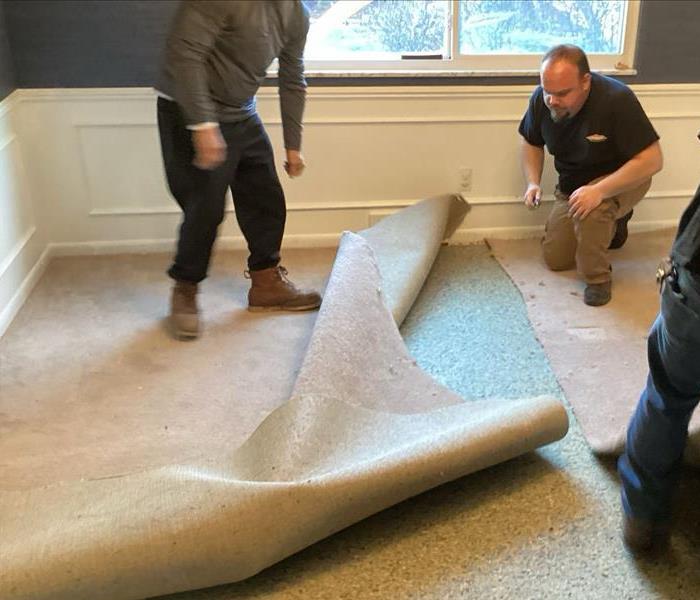 Water or flood damage can result in a substantial amount of waste that needs proper handling and disposal.
Water or flood damage can result in a substantial amount of waste that needs proper handling and disposal.
Water or flood damage can result in a substantial amount of waste that needs proper handling and disposal. From damaged belongings to contaminated materials, managing the waste generated during water damage restoration is essential for safety and environmental reasons. In this blog, we'll provide a comprehensive guide to waste removal and disposal to ensure a thorough and responsible cleanup process.
1. Safety First: Assessing Waste Materials
Before handling any waste materials, prioritize safety. Identify and segregate items damaged by water or contamination. Categorize waste into non-hazardous and hazardous materials based on their potential risks to the surroundings and the environment. Hazardous waste might include items contaminated by sewage or chemicals.
2. Proper Handling and Segregation
Separate items into categories for disposal: salvageable items, non-hazardous waste, and hazardous waste. Salvageable items can undergo restoration, while non-hazardous waste, like drywall or carpets, can often be disposed of in regular waste bins. Hazardous waste should be handled with extreme caution and disposed of following specific guidelines.
3. Disposal of Non-Hazardous Waste
Non-hazardous waste like damaged furniture, drywall, or flooring can typically be disposed of following local regulations. Bag or wrap these materials securely and dispose of them following your area's waste management guidelines.
4. Proper Disposal of Hazardous Waste
Hazardous waste, including contaminated materials or chemicals, requires specialized handling and disposal. Contact local authorities or waste disposal facilities for guidance on how to properly dispose of hazardous waste. Professional waste removal services may be necessary for safe disposal.
5. Recycling and Sustainable Practices
Whenever possible, opt for recycling damaged materials such as metal, glass, or plastic. Salvageable items can be donated if they're in a condition to be reused. Promoting recycling and sustainable practices minimizes the environmental impact of waste generated during water damage restoration.
6. Professional Restoration Services
Consider engaging professional restoration services, like SERVPRO®, that specialize in water damage cleanup. These experts have the knowledge, tools, and experience to manage waste removal and disposal safely and efficiently, adhering to environmental regulations.
Proper waste removal and disposal are critical aspects of water/flood damage restoration. Safely managing waste materials, segregating non-hazardous from hazardous waste, following local disposal guidelines, recycling where possible, and considering professional restoration services are key steps toward a responsible cleanup process.
At SERVPRO of Grosse Pointe, we prioritize safe and responsible waste removal during water damage restoration. Our experienced team ensures proper handling and disposal of waste materials, adhering to environmental guidelines. Contact us for expert assistance in water damage restoration and responsible waste disposal!
Why Clearing Gutters and Drains Before the Storm is Important
1/12/2024 (Permalink)
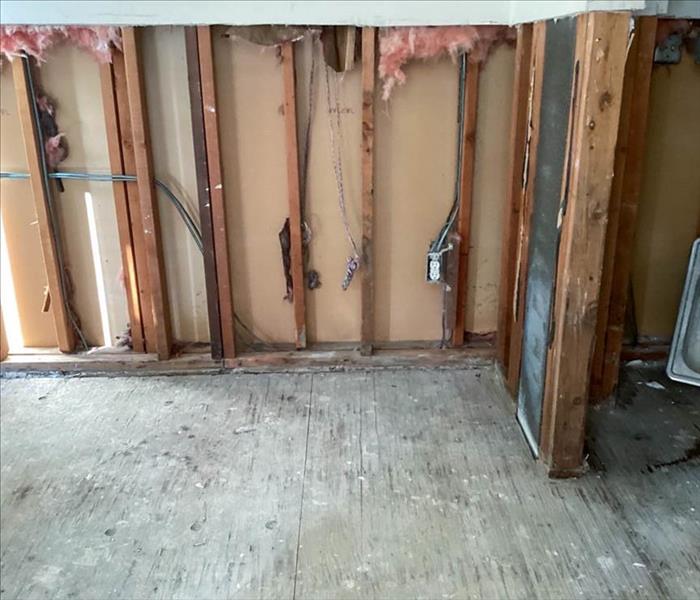 If your property faces storm-related damage, SERVPRO of Grosse Pointe is here 24/7 to provide professional restoration services!
If your property faces storm-related damage, SERVPRO of Grosse Pointe is here 24/7 to provide professional restoration services!
Welcome to the SERVPRO® blog, your trusted resource for expert advice on home safety and disaster preparedness. Preparing your home against storms and severe weather is always important. In this blog, we'll explore the importance of clearing gutters and drains before a storm hits, offering valuable insights to protect your property from water damage.
Preventing Water Overflow
Clearing gutters and drains is your first line of defense against water overflow during heavy rain. When debris accumulates in gutters, rainwater can't properly drain, leading to potential flooding, foundation damage, and compromised structural integrity.
Avoiding Roof Leaks
Clogged gutters can result in standing water on your roof. When this water accumulates, it can seep into the roof structure, causing leaks and water damage to your home's interior. Regular gutter maintenance helps prevent these issues and ensures a watertight roof.
Protecting the Foundation
A well-functioning gutter system directs rainwater away from your home's foundation. If gutters are clogged, water may pool around the foundation, leading to erosion, cracks, and even basement flooding. Clearing gutters is a proactive step to safeguard your foundation from water-related damage.
Preventing Ice Dams in Winter
In colder climates, clogged gutters contribute to the formation of ice dams. When gutters are filled with debris, ice can build up, causing water to back up and seep into your home. Clearing gutters before winter storms hit is crucial for preventing ice dams and subsequent water damage.
Preserving Landscaping
Proper drainage is essential for preserving your landscaping. Clogged gutters and drains can lead to soil erosion and damage to plants and flowers. By keeping gutters clear, you protect not only your home but also the beauty of your outdoor spaces.
Enhancing Overall Home Durability
Maintaining clear gutters and drains contributes to the overall durability of your home against storm-related challenges. By preventing water damage, you minimize the risk of structural issues, mold growth, and costly repairs.
Clearing gutters and drains is a proactive and simple measure that can make a significant difference in protecting your home from storm-related water damage. If your property faces storm-related damage, SERVPRO of Grosse Pointe is here 24/7 to provide professional restoration services!
The Different Stages of Fire Damage Restoration & Cleanup
12/13/2023 (Permalink)
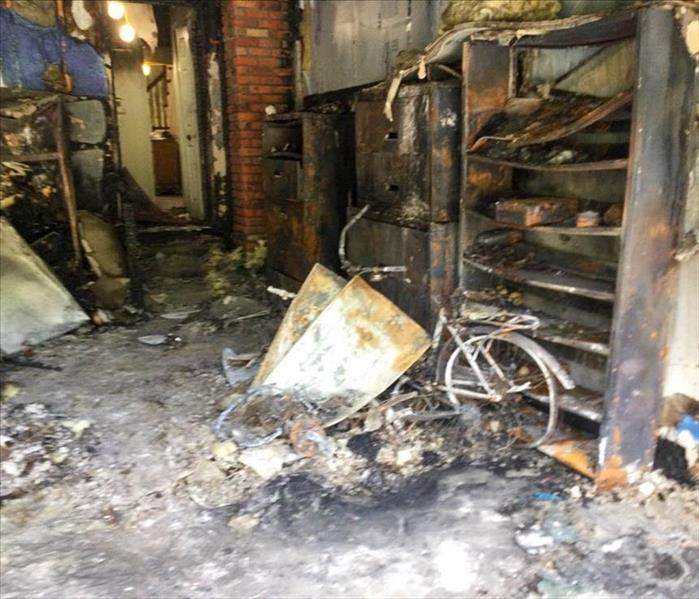 Understanding the different stages of fire damage restoration is crucial when dealing with the aftermath of a fire.
Understanding the different stages of fire damage restoration is crucial when dealing with the aftermath of a fire.
Dealing with the aftermath of a fire can be an overwhelming and emotional experience. It's good to understand the fire damage restoration process and the various stages involved to know what to expect and to give yourself peace of mind. In this blog, we'll walk you through the different phases of fire damage restoration, from assessment to the final restoration, so you can be better informed and prepared when facing this challenging situation.
Assessment and Inspection
The first stage of fire damage restoration is the initial assessment and inspection. Professional restoration teams like SERVPRO® of Grosse Pointe will evaluate the extent of the damage, including structural, soot, and smoke damage, to determine the best course of action. This stage helps in creating a detailed restoration plan.
Fire Damage Cleanup
Once the assessment is complete, the cleanup phase begins. This includes the removal of debris, ash, and soot from surfaces and possessions. Specialized equipment and cleaning techniques are employed to ensure thorough cleaning while minimizing further damage.
Water Damage Mitigation
In many cases, water damage results from firefighting efforts. The third stage involves addressing water damage, including extraction, drying, and dehumidification. Preventing mold growth and structural issues is crucial at this stage.
Soot and Smoke Removal
Soot and smoke residues can pose risks and cause lingering odors. Professional restoration teams use specialized equipment and techniques to remove soot and smoke from surfaces, including walls, ceilings, and personal belongings.
Structural Repair and Reconstruction
Restoring the structural integrity of your property is often the most extensive stage of the process. This involves repairing or replacing damaged structural elements, such as walls, floors, and roofs. It's essential for both safety and the visual appeal of your property.
Odor Elimination
Lingering smoke odors can be a persistent issue. To ensure a complete restoration, professionals use advanced techniques like ozone treatment and thermal fogging to eliminate odors and improve indoor air quality.
Content Cleaning and Restoration
Your personal belongings, including clothing, furniture, and electronics, may also require cleaning and restoration. Professionals will employ various methods to salvage and restore these items.
Final Inspection and Restoration
After all the previous stages are complete, a final inspection is carried out to ensure that all work meets industry standards. This phase may also involve painting, refinishing, and returning your property to its pre-fire condition.
Claim Assistance
Throughout the restoration process, professionals can assist with insurance claims, providing documentation and reports to support your claims and streamline the process.
Understanding the different stages of fire damage restoration is crucial when dealing with the aftermath of a fire. Professional restoration services, like SERVPRO® of Grosse Pointe, have the expertise and equipment to guide you through each phase efficiently. By knowing what to expect and the importance of each stage, you can have confidence in the restoration process and look forward to rebuilding your life and property after a fire.
Protecting Your Home: The Power of Mold-Resistant Building Materials and Methods
11/8/2023 (Permalink)
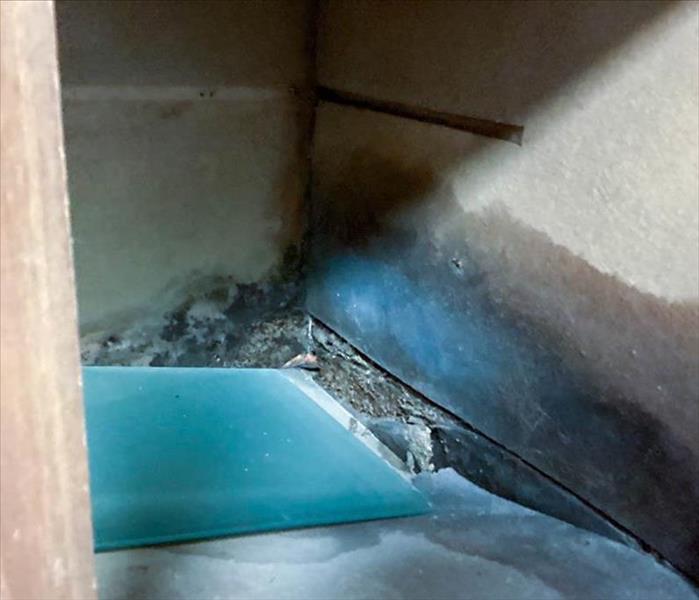 Mold-resistant building materials and techniques are not just theoretical; they have been put to practical use with excellent results.
Mold-resistant building materials and techniques are not just theoretical; they have been put to practical use with excellent results.
Mold is a common challenge in the area due to fluctuating weather conditions. When it comes to constructing or renovating your home, it's essential to consider mold-resistant building materials and techniques. In this blog, we'll explore how these strategies can help protect your Detroit, MI property from mold and maintain its structural integrity.
The Importance of Mold-Resistant Building Materials
Using mold-resistant materials during construction or renovation can significantly reduce the risk of mold growth. Here are some key options to consider:
- Mold-Resistant Drywall
Mold-resistant drywall, also known as green board or blue board, is designed to resist moisture and mold. It's an excellent choice for areas prone to high humidity, such as bathrooms and kitchens.
- Mold-Resistant Insulation
Certain insulation materials, such as closed-cell spray foam and fiberglass with a mold-resistant face, can help prevent moisture infiltration and mold growth within wall cavities.
- Mold-Resistant Paints and Primers
Mold-resistant paints and primers contain antimicrobial agents that inhibit mold growth on painted surfaces. These are ideal for interior and exterior applications.
Effective Mold-Resistant Techniques
In addition to using the right materials, incorporating mold-resistant construction techniques is crucial:
- Proper Ventilation
Effective ventilation systems, including exhaust fans in bathrooms and kitchens, can help control humidity levels and prevent moisture buildup, reducing the risk of mold growth.
- Moisture Barriers
Installing moisture barriers like vapor barriers or house wraps can help prevent moisture from entering your home's interior, keeping your walls and insulation dry.
- Sealing Cracks and Gaps
Seal any cracks, gaps, or openings in your home's exterior to prevent water intrusion. This includes sealing around windows, doors, and roof penetrations.
- Professional Inspections
Regular inspections by certified professionals can identify potential trouble spots and allow for early intervention, reducing the risk of mold issues.
Mold-Resistant Building Materials in Action
Mold-resistant building materials and techniques are not just theoretical; they have been put to practical use with excellent results. Builders are increasingly embracing these methods to protect homes from mold-related challenges.
Mold-resistant building materials and techniques are invaluable in Detroit, MI, where mold problems can be persistent. By incorporating these strategies into your construction or renovation project, you can protect your property from mold growth and ensure a healthier and more durable living environment. If you ever encounter mold issues in your home or require expert advice on mold prevention, don't hesitate to contact SERVPRO® of Grosse Pointe for professional assistance. We're here to help you keep your Detroit home mold-free and comfortable.
Safely Disposing of Water-Damaged Materials and Debris in Grosse Pointe
10/8/2023 (Permalink)
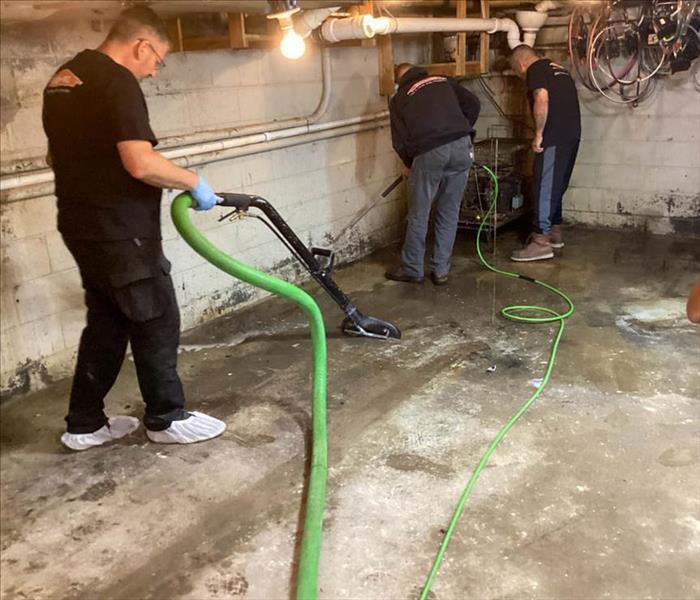 Water damage can strike when you least expect it.
Water damage can strike when you least expect it.
Water damage can strike when you least expect it, and when it does, addressing the aftermath is crucial for a swift recovery. One essential aspect of the restoration process is the safe disposal of water-damaged materials and debris. In this blog, we'll guide you through the proper methods and precautions to ensure the safe removal and disposal of materials affected by water damage.
Why Proper Disposal Matters
Health and Safety: Water-damaged materials can harbor harmful bacteria, mold, and contaminants. Safe disposal is essential to protect your health and the well-being of those involved in the cleanup.
Preventing Mold: Mold can quickly develop on wet materials, spreading to other parts of your property. Proper disposal reduces the risk of mold infestation.
Environmental Responsibility: Disposing of materials improperly can harm the environment. Responsible disposal methods are essential for preserving Detroit's natural beauty.
Safe Disposal Steps
Safety First: Before starting the disposal process, ensure your safety by wearing appropriate protective gear, such as gloves, masks, and eye protection.
Assessment: Begin by assessing the extent of water damage. Identify materials that are beyond repair and need disposal.
Isolate and Remove: Isolate damaged materials from unaffected ones to prevent further contamination. Remove damaged items carefully, avoiding unnecessary disturbance.
Proper Packing: Double-bag or wrap the damaged materials securely to prevent leakage during transportation.
Local Regulations: Research Grosse Pointe’s regulations for waste disposal. Different materials may have specific disposal requirements.
Hazardous Waste: If any materials are considered hazardous, such as asbestos-containing materials, follow strict guidelines for their disposal to comply with safety and environmental regulations.
Licensed Disposal Services: Consider hiring licensed disposal services for larger-scale cleanup projects. These professionals are trained in safe disposal methods.
Remember to maintain records of what you dispose of, including photographs, for insurance claims and future reference.
Recycling and Donation
Whenever possible, consider recycling or donating salvageable items. This not only reduces landfill waste but also benefits those in need. Organizations in Grosse Pointe may accept gently used items, helping the community while minimizing environmental impact.
Proper disposal of water-damaged materials and debris is a vital step in the aftermath of water damage. It protects health, prevents mold growth, and ensures environmental responsibility. By following the steps outlined here and adhering to local regulations, you can safely and responsibly manage the disposal process. If you find yourself dealing with extensive water damage, remember that SERVPRO® of Grosse Pointe is here to assist you with professional cleanup and restoration services. We're committed to helping you restore your property and preserve Grosse Pointe’s natural charm.






 24/7 Emergency Service
24/7 Emergency Service








